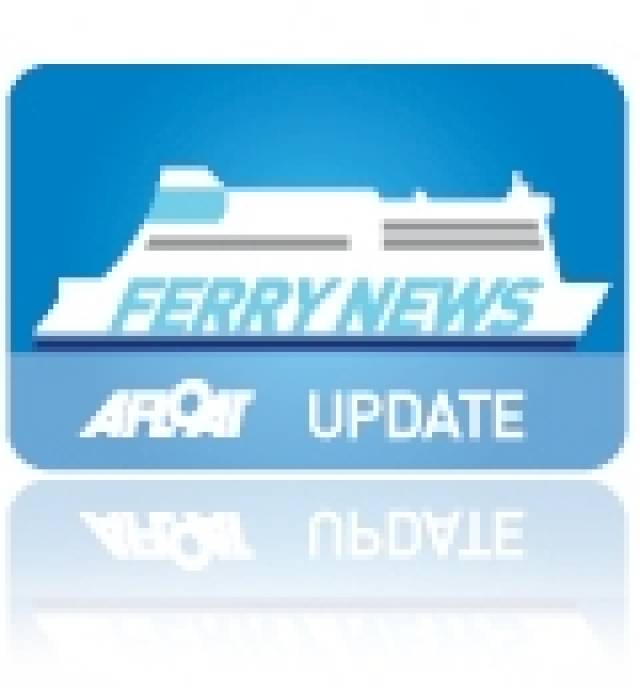#FarewellHSS- A fast-ferry that served the Belfast-Stranraer route, which no longer exists, departed Belfast for the final time at the weekend. The ferry HSS Stena Voyager is bound for Sweden where she is to be scrapped, writes Jehan Ashmore.
The 19,000 tonnes Stena Voyager is under tow to the Öresundsvarvet shipyard in Landskrona, where she will be recycled by a subsidiary of the ferry company, Stena Recycling.
All of the vessels various components will be recycled, as far as is possible, to maintain the company's environmental reputation. Some of the materials will even be reused in the form of car parts or furniture.
Stena Voyager was displaced on the Northern Channel route in November 2011 following the change of Scottish port, from Stranraer at the end of the lough to Cairnryan which is closer to the open sea.
In addition a pair of conventional yet fast ro-pax 'Superfast' ferries were introduced bringing superior facilities coupled with greater freight capacity.
These factors combined with a shorter passage time between Belfast and Cairnryan and rising fuel costs over several years saw the writing on the wall for the HSS craft, which when introduced in the mid 1990's were the pride of the Stena Line fleet.
The Swedish ferry giant commissioned a trio of HSS (High Speed sea-Service) fast-craft, whose futuristic appearance and technology was adopted from the world of aviation that included gas-turbine engines to power water-jets producing up to 40 knots.
Stena Voyager carried 1,500 passengers and 375 cars and she was launched onto the North Channel route in 1996, since then the fast-craft has carried more than 17m passengers and over 45,000 sailings.
"Whilst the HSS class was a unique and highly innovative development for Stena Line, unfortunately the spiralling costs of operating the Stena Voyager have become all too high. When the Voyager was first put into service fuel was approximately $20 per barrel and now the price is around $110 dollar, for a fuel hungry vessel this is simply untenable," said Michael McGrath, Stena Line's Chief Operating Officer.
The first of the revolutionary craft was HSS Stena Explorer which currently maintains the seasonal-only Dun Laoghaire-Holyhead having been also introduced in 1996. Final member of the class was HSS Stena Discovery which served Harwich-Hook van Holland from 1997, however she was the first to go and now serves operators out of Venezuela.
The concept of the HSS craft were also to compete with air-travel on the short hop between Northern Ireland and Scotland. In tandem the HSS ran alongside older conventional ferries, among them Stena Caledonia, which was sold last year to Indonesian operator ASDP and renamed Port Link.
































































